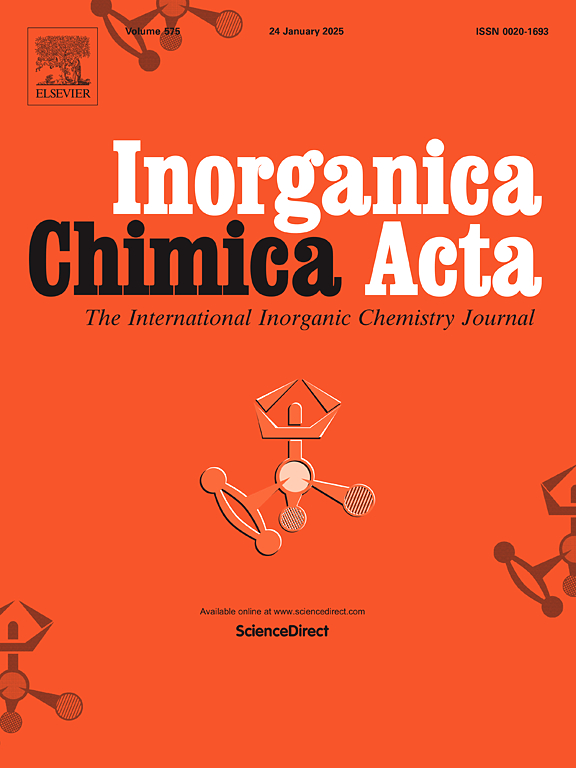Synthesis, characterization, electrochemistry and spectroelectrochemistry of new non-peripherally hexyl benzoate substituted CoII, CuII, MnIII(Cl) phthalocyanines
IF 2.7
3区 化学
Q2 CHEMISTRY, INORGANIC & NUCLEAR
引用次数: 0
Abstract
Metallo phthalocyanines (MPcs) non-peripherally substituted with hexyl benzoate and bearing Co2+, Cu2+, Mn3+(Cl) metal centers, which are labeled as CuPc, CoPc, and MnPc respectively, were synthesized and then characterized with mass, UV–Vis, and FT-IR spectroscopy techniques. Then, the spectroelectrochemical and electrochemical characterizations of these complexes were carried out. The voltametric and spectroelectrochemical responses indicated that while phthalocyanine (Pc) bearing Cu2+ (CuPc) illustrated only Pc-based electron transfer processes, metal-based redox reactions were observed for the CoPc and MnPc in addition to the Pc ring-based ones. While CoPc illustrated one metal based oxidation and one metal based reduction processes in addition to the phthalocyanine ring based electron transfer reactions, MnPc illustrated two metal based reductions and phthalocyanine ring based electron transfer reactions. Altering the solvent of the electrolyte (dimethyl sulfoxide and dichloromethane) influenced the redox characters of all complexes due to the coordination/noncoordinating of the solvents of the electrolyte to the metal center of the complexes, and coordination of the donor solvent dimethyl sulfoxide solvent to the metal center stabilized the high oxidation state of the cobalt center of CoPc. Electron transfer reactions of the complexes significantly influenced their spectral responses; thus, predominant spectral and color changes were observed during the spectroelectrochemical measurements.

求助全文
约1分钟内获得全文
求助全文
来源期刊

Inorganica Chimica Acta
化学-无机化学与核化学
CiteScore
6.00
自引率
3.60%
发文量
440
审稿时长
35 days
期刊介绍:
Inorganica Chimica Acta is an established international forum for all aspects of advanced Inorganic Chemistry. Original papers of high scientific level and interest are published in the form of Articles and Reviews.
Topics covered include:
• chemistry of the main group elements and the d- and f-block metals, including the synthesis, characterization and reactivity of coordination, organometallic, biomimetic, supramolecular coordination compounds, including associated computational studies;
• synthesis, physico-chemical properties, applications of molecule-based nano-scaled clusters and nanomaterials designed using the principles of coordination chemistry, as well as coordination polymers (CPs), metal-organic frameworks (MOFs), metal-organic polyhedra (MPOs);
• reaction mechanisms and physico-chemical investigations computational studies of metalloenzymes and their models;
• applications of inorganic compounds, metallodrugs and molecule-based materials.
Papers composed primarily of structural reports will typically not be considered for publication.
 求助内容:
求助内容: 应助结果提醒方式:
应助结果提醒方式:


